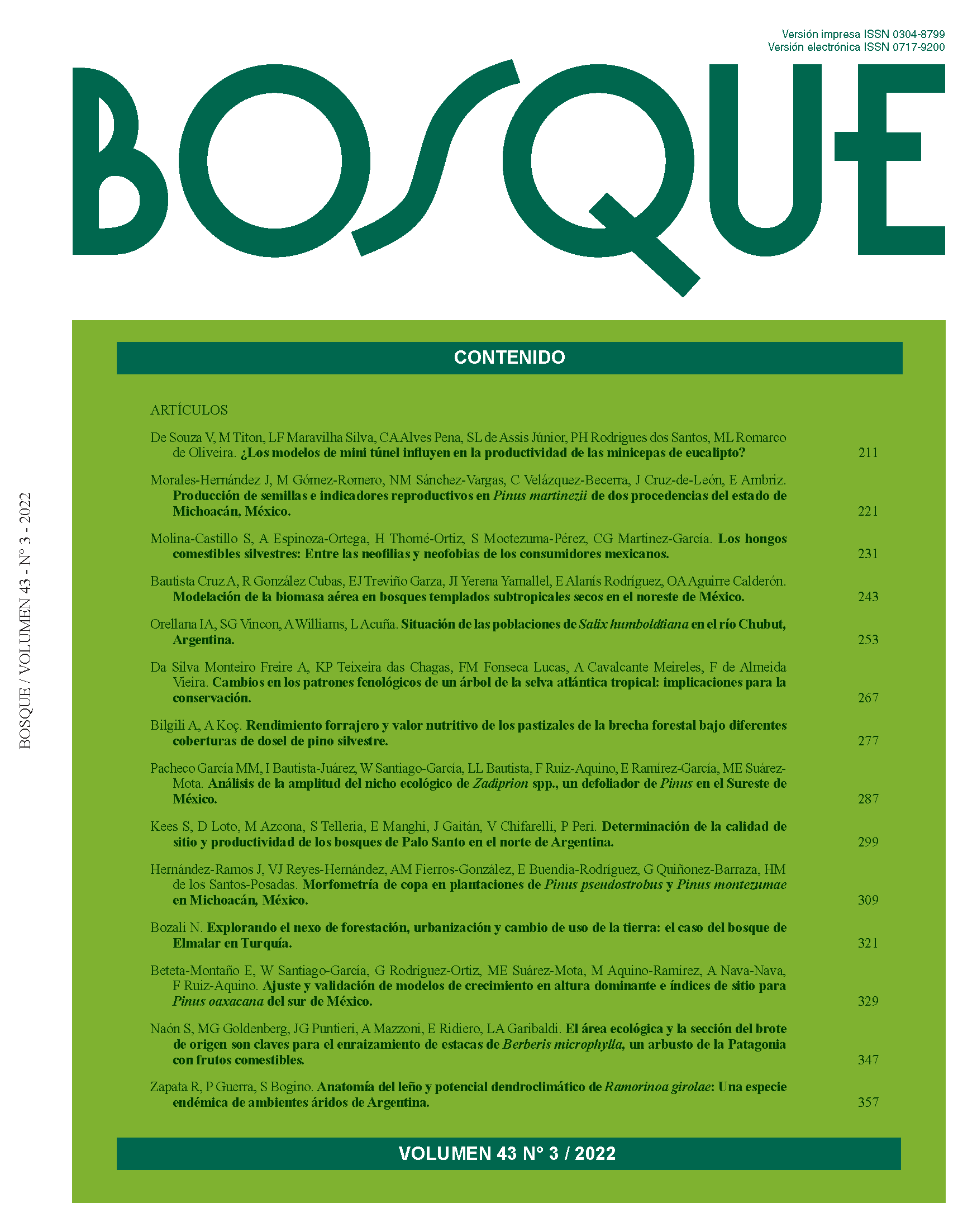Main Article Content
Jan 4, 2023
Abstract
Calafate (Berberis microphylla) is a native and widely distributed Patagonian shrub, which produces edible fruits with excellent antioxidant and nutraceutical properties. This study evaluates its multiplication by the rooting of stem cuttings, a widely used method in fruit species with little success so far in B. microphylla. This work was carried out using stakes prepared in late winter from the basal, middle and apical portions of the most recently developed semi-hardwood shoots. Three plant communities corresponding to contrasting environments were included (rainforest, shrubland and steppe), and four auxin (indole-butyric acid, IBA) concentrations were applied: 0 ppm (0 %), 2000 ppm (0.2 %), 5,000 ppm (0.5 %) and 8,000 ppm (0.8 %). After ninety days on a bottom-heated rooting-bed in a greenhouse, adventitious root formation was higher in cuttings derived from rainforest material. This difference was, on average, 40 % greater for the basal portions than for the middle and apical portions. The IBA treatments did not improve rooting, although the increase in root weight and length was recorded at the highest concentration as compared to the intermediate concentrations. It is concluded that the multiplication of B. microphylla by stem cuttings is possible, and that the geographical and topological stake origin are important factors for adventitious root development.
Downloads

This work is licensed under a Creative Commons Attribution-NonCommercial 4.0 International License.


